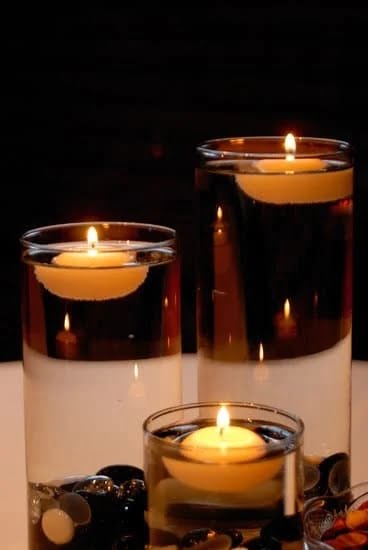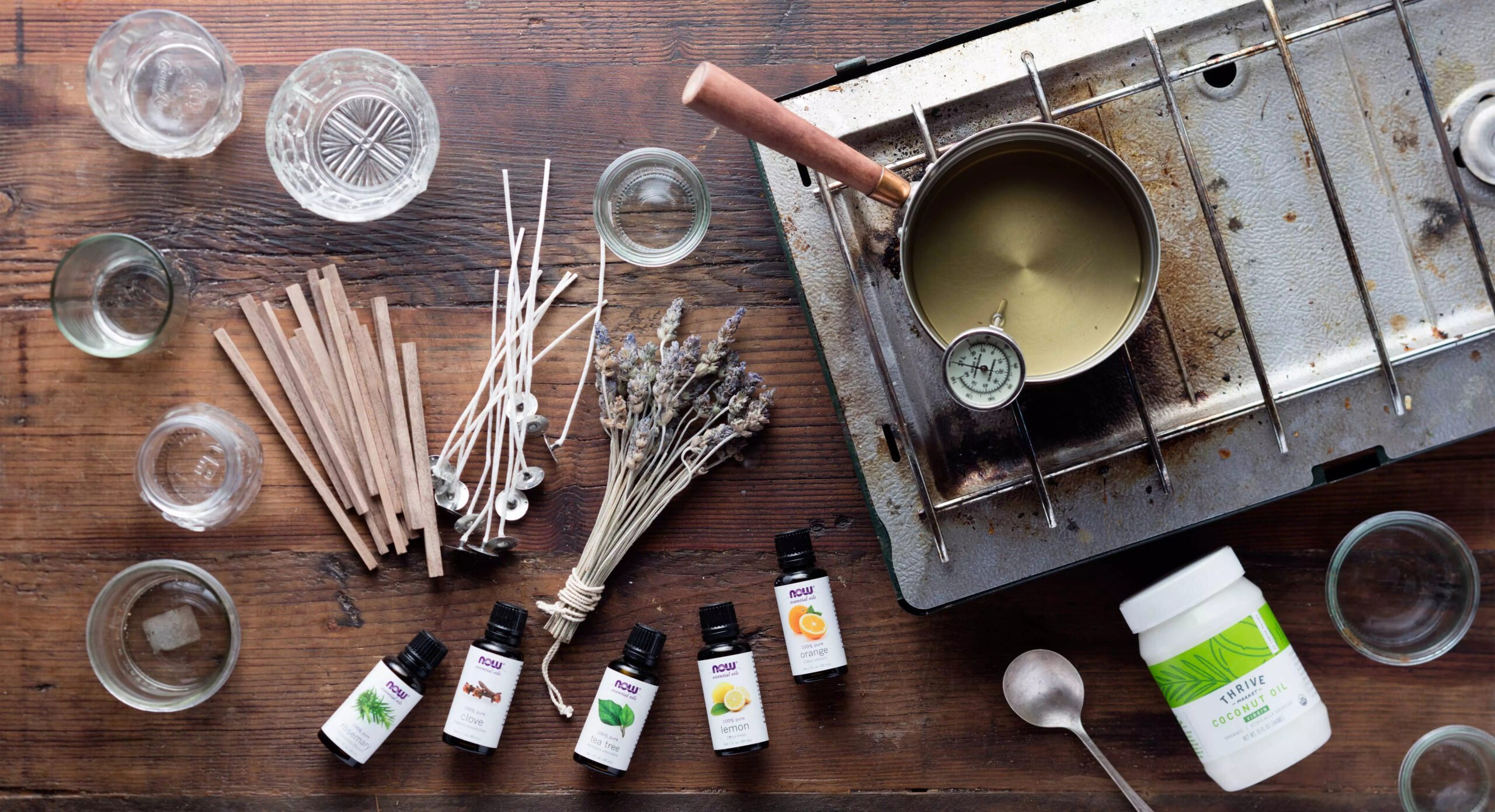When it comes to candle making, one of the most essential elements is the choice of fragrance oil. Fragrance oils play a crucial role in determining the scent, ambiance, and overall quality of the candles you create. Whether you are a beginner or an experienced candle maker, selecting the best fragrance oils is key to achieving desirable results.
Fragrance oils are synthetic or natural aromatic compounds that are specially formulated to add scent to various products, including candles. They are designed to release their pleasant aroma when heated, filling your space with enticing fragrances. These oils contribute not only to the scent but also to the quality and overall performance of your candles.
Choosing the right fragrance oil for candle making involves considering several factors. First and foremost is finding a fragrance that aligns with your personal preferences or fits the intended purpose of your candles. Additionally, factors such as burn stability, compatibility with different wax types, and potential allergies are important considerations. It’s crucial to thoroughly research and select high-quality fragrance options that meet these requirements in order to ensure optimal results in your candle making endeavors.
In this article, we will delve into the world of fragrance oils for candle making. We’ll explore how to choose them wisely and provide recommendations for popular options that have garnered positive reviews.
Furthermore, we will touch upon tips for blending fragrance oils to create unique scents and discuss important aspects such as ratings and their impact on candle performance. So read on as we unravel everything you need to know about selecting the best fragrance oils for your candle making projects.
Factors to consider when choosing fragrance oils for candle making
When it comes to candle making, choosing the right fragrance oil is crucial in creating a high-quality and appealing product. Here are some important factors to consider when selecting fragrance oils for your candle making projects:
- Scent Strength: The scent strength of a fragrance oil determines how noticeable the aroma will be when the candle is burned. It’s essential to choose a fragrance oil with a scent strength that matches your desired intensity. Some fragrance oils have a stronger scent throw, which means they can easily fill larger spaces with their aroma, while others may be more suitable for smaller rooms or subtle scents.
- Compatibility: Not all fragrance oils are compatible with every type of wax or candle-making process. It’s important to ensure that the fragrance oil you choose is compatible with your chosen wax type, whether it’s soy wax, beeswax, or paraffin. Additionally, consider any special requirements or recommendations from the manufacturer regarding temperature limits or curing times.
- Longevity: The longevity of a fragrance oil refers to how well the scent holds up over time. Some fragrances may fade quickly when exposed to heat and light, resulting in a shorter lifespan for your candles’ aroma. Look for fragrance oils that are known for their longevity and can maintain their scent throughout the lifespan of the candle.
- Personal Preference: Ultimately, choosing fragrance oils for your candle making projects also comes down to personal preference and the type of atmosphere you want to create. Consider scents that align with your brand or target audience and those that evoke certain moods or emotions.
| Factor | Description |
|---|---|
| Scent Strength | The intensity of the aroma when the candle is burned. |
| Compatibility | Whether the fragrance oil is compatible with your chosen wax type and candle-making process. |
| Longevity | The ability of the fragrance oil to maintain its scent over time. |
| Personal Preference | Your own preferences and desired atmosphere for your candles. |
Taking these factors into account will help you make an informed decision when choosing fragrance oils for your candle making projects. Remember to experiment and test different scents to find the perfect combination that aligns with your vision and captivates your customers.
Researching and selecting the right fragrance oils
Researching and selecting the right fragrance oils for candle making is a crucial step in ensuring that your candles have a pleasing and long-lasting scent. With countless options available in the market, it can be overwhelming to find high-quality fragrance oils that are suitable for your specific needs. Here are some tips on how to research and select the right fragrance oils:
Consider the Purpose of Your Candle
Before you start researching fragrance oils, it’s important to consider the purpose or theme of your candle. Are you making candles for relaxation and self-care? Or are you creating scented candles for special occasions like weddings or holidays? Understanding the purpose will help guide you in selecting fragrance oils that align with the desired ambiance or mood.
Read Reviews and Seek Recommendations
One of the best ways to find high-quality fragrance oils is by reading reviews from other candle makers or customers who have used them before. Look for reviews that mention factors such as scent strength, longevity, and how well the fragrances perform in candles. Additionally, seek recommendations from fellow candle makers or join online communities where experienced crafters share their favorite fragrance oil brands.
Sample Fragrance Oils
To ensure that you’re choosing the right fragrance oils for your candle making projects, it’s highly recommended to sample different options before committing to a larger quantity. Many suppliers offer small sample sizes or sets of various scents for this purpose. By sampling different fragrances, you can test their performance during the burning process and see if they meet your expectations.
Evaluate Supplier’s Reputation and Transparency
When researching fragrance oil options, it’s essential to consider the reputation and transparency of the supplier. Look for suppliers who provide detailed information about their products, including ingredients used, manufacturing processes, safety guidelines, and any additional certifications they may have. A reputable supplier will prioritize quality and transparency in their fragrance oils, ensuring that you are getting a high-quality product for your candle making endeavors.
By thoroughly researching and selecting the right fragrance oils, you can enhance the overall experience of your candles and ensure customer satisfaction. Take the time to consider the purpose of your candle, read reviews, sample different fragrances, and evaluate supplier reputation and transparency. These steps will help you find high-quality fragrance oils that not only smell great but also perform well in your candle creations.
Top 5 popular fragrance oils for candle making
When it comes to candle making, choosing the right fragrance oils can make a world of difference. The scent of a candle is what captivates our senses and creates the desired ambiance in our homes or spaces. In this section, we will delve into the top 5 popular fragrance oils for candle making, providing a detailed review and recommendation for each.
Lavender
Lavender fragrance oil is one of the most beloved scents in candle making. It has a soothing and calming effect that promotes relaxation and sleep. This versatile oil pairs well with other floral or herbal scents, creating a harmonious blend. When using lavender fragrance oil, it is best to opt for high-quality options that capture the true essence of lavender without any synthetic undertones.
Vanilla
Vanilla fragrance oil is often associated with warmth, comfort, and nostalgia. Its sweet and inviting aroma lingers in the air, creating a cozy atmosphere. Vanilla blends well with other dessert-inspired scents like chocolate or caramel, as well as fruity or woody notes. Look for vanilla fragrance oils that are rich and creamy, without any overpowering artificial sweetness.
Sandalwood
Sandalwood fragrance oil offers an earthy and exotic aroma that adds depth and sophistication to candles. It has a warm and musky scent that is often associated with meditation and spirituality. Sandalwood blends beautifully with floral or citrus fragrances, adding complexity to the overall scent profile. For the best results, choose sandalwood fragrance oils that are authentic and long-lasting.
Citrus
Citrus fragrance oils bring freshness and energy into any space. Scents like lemon, orange, lime, or grapefruit invigorate the senses and uplift moods. Citrus fragrances work well on their own as they are vibrant and refreshing, but also blend harmoniously with other fruity, herbal, or floral scents. When selecting citrus fragrance oils, make sure they are bright, zesty, and true to their natural counterparts.
Apple
Apple fragrance oil is a delightful choice that fills the air with the crisp and sweet aroma of ripe apples. This scent creates a cozy and nostalgic atmosphere that is reminiscent of autumn or apple orchards. Apple fragrance oils can be enjoyed on their own or combined with cinnamon or vanilla for a cozy and warming effect. Look for apple fragrance oils that are authentic and capture the essence of freshly picked apples.
Tips for blending fragrance oils
Blending fragrance oils is a creative and enjoyable process that allows candle makers to create unique and enticing scents. By combining different fragrance oils, you can customize the aroma of your candles and create signature blends that set your products apart from others in the market. Here are some tips for blending fragrance oils:
- Start with a clear vision: Before you begin blending, have a clear idea of the scent profile you want to achieve. Consider the purpose of your candle and the mood or atmosphere you want it to create. This will help guide your selection of fragrance oils and ensure that your blends are cohesive.
- Keep notes: As you experiment with different combinations, make sure to take detailed notes of each blend you create. Document the ratios of each fragrance oil used and describe the resulting scent. This will allow you to reproduce successful blends in the future and avoid repeating unsuccessful ones.
- Start small: When blending fragrance oils, it’s best to start with small quantities until you find a combination that works well. Begin by mixing just a few drops of each oil together and gradually increase the amounts as needed. Blending in small batches also allows for easy adjustments if one particular scent overpowers the others.
- Consider fragrance families: Familiarize yourself with different fragrance families such as floral, fruity, woody, or spicy scents. Blending fragrances within the same family often creates harmonious combinations, but don’t be afraid to experiment with contrasting scents for more complex and intriguing results.
- Test your blends: Once you have created a blend that you are satisfied with, it’s important to test it in your candles before mass producing them. Make sample candles using different waxes and wicks to evaluate how well the scent performs when burned. This testing phase will help ensure that your blended fragrances have good throw (the ability to fill a room with their aroma) and do not morph or change when ignited.
Blending fragrance oils for candle making is a skill that develops with practice and experimentation. Don’t be afraid to think outside the box and try unconventional combinations. With time, you’ll become more adept at creating unique scents that your customers will love.
Understanding fragrance oil ratings and their impact on candle performance
When it comes to choosing fragrance oils for candle making, it’s important to understand fragrance oil ratings and how they can impact the performance of your candles. Fragrance oil ratings are a way to determine the strength and quality of a fragrance, as well as its compatibility with different types of waxes.
Fragrance oils are typically rated on a scale of 1 to 5, with 1 being the weakest and 5 being the strongest. This rating system indicates the intensity of the scent when used in candles. It’s important to note that a higher rating doesn’t necessarily mean a better fragrance oil. The rating simply shows how strong or weak the scent will be when added to your candles.
The impact of fragrance oil ratings on candle performance is significant. Choosing a fragrance oil with a rating that matches your desired scent strength is crucial. If you’re looking for a subtle scent, opting for a lower-rated fragrance oil would be ideal. On the other hand, if you want a more intense aroma, choosing a higher-rated fragrance oil is recommended.
Another factor to consider when it comes to fragrance oil ratings is their compatibility with different types of waxes. Certain waxes may perform better with specific fragrance oils based on their properties. For example, soy wax tends to hold fragrances well, while palm wax may require stronger scents due to its dense structure. Researching and experimenting with different fragrance oil ratings in combination with various waxes will help you achieve optimal candle performance.
Exploring natural vs synthetic fragrance oils
When it comes to choosing fragrance oils for candle making, one important consideration is whether to use natural or synthetic oils. Each option has its own pros and cons that can impact the scent, performance, and overall quality of the candles.
Natural fragrance oils
Natural fragrance oils are derived from plants, flowers, fruits, or other natural sources. They are often considered a more sustainable and eco-friendly choice as they do not contain synthetic chemicals or ingredients. Natural oils generally have a softer and more subtle scent compared to their synthetic counterparts.
Some advantages of using natural fragrance oils include:
- Authentic scent: Natural oils capture the true essence of the source material, resulting in a more realistic and authentic scent.
- Environmental considerations: For those who prioritize sustainability and reducing their carbon footprint, natural fragrance oils are a preferable choice.
However, there are also some drawbacks to using natural fragrance oils:
- Limited variety: Natural options may offer a narrower range of scents compared to synthetic options, as they rely on available plant-based sources.
- Cost: Due to the extraction process and limited availability of certain plant materials, natural fragrance oils can be more expensive than synthetic alternatives.
Synthetic fragrance oils
Synthetic fragrance oils are created in a laboratory using various chemicals to mimic specific scents. They offer a wide range of fragrances that may not be naturally obtainable or cost-effective. Synthetic oils typically have a stronger and longer-lasting scent compared to natural options.
Here are some advantages of using synthetic fragrance oils:
- Versatility: Synthetic fragrances provide an extensive selection of scents that can cater to diverse preferences and creative combinations.
- Cost-effective: Synthetic options tend to be more affordable than their natural counterparts due to the ease of production and availability.
Despite these benefits, there are also potential downsides associated with synthetic fragrance oils:
- Potential allergenic effects: Some individuals may have sensitivities or allergies to synthetic chemicals commonly found in fragrance oils.
- Environmental concerns: Synthetic fragrance oils are often made from petroleum-based ingredients, posing potential environmental risks during production and disposal.
When deciding between natural and synthetic fragrance oils, it is essential to consider personal preferences, budget, and the specific needs of your candle making projects. Ultimately, the choice depends on striking a balance between sustainability, scent range, performance, and individual preferences.
Expert advice on storing and preserving fragrance oils for optimal freshness
Storing and preserving fragrance oils properly is essential for maintaining their optimal freshness and quality. Here are some expert tips to help you ensure the longevity of your fragrance oils:
- Store in a cool, dark place: Fragrance oils are sensitive to heat, light, and air. To prevent any degradation or spoilage, it is crucial to store them in a cool, dark place away from direct sunlight or any extreme temperature changes. A cupboard or drawer in a room with a stable temperature is ideal for storing fragrance oils.
- Use amber or dark glass containers: When purchasing fragrance oils, look for ones that come in amber or dark glass bottles. These dark-colored containers prevent light from penetrating and degrading the oil, ensuring its freshness and potency over time.
- Keep containers tightly sealed: Properly sealing the containers after each use is important to prevent air exposure and oxidation of the fragrance oil. Make sure to tighten the caps properly to ensure an airtight seal.
- Avoid cross-contamination: To maintain the integrity of each fragrance oil, it is crucial to avoid cross-contamination between different scents. Clean your equipment thoroughly after each use and consider using separate tools for different fragrances to prevent any blending or alteration of scents.
- Date your fragrance oils: It’s a good practice to label your fragrance oils with their purchase date or date of receipt. This will help you keep track of their age and ensure you use them before they expire or lose their potency.
- Avoid storing near strong odors: Fragrance oils can easily absorb surrounding odors, so it’s important to keep them away from strong-smelling substances like cleaning products, spices, or perfumes. This will help preserve their original scent profile and ensure they don’t get contaminated by other aromas.
By following these expert tips on storing and preserving fragrance oils for optimal freshness, you can prolong the lifespan of your oils and continue to enjoy their exquisite scents in your candle making projects.
Frequently asked questions about fragrance oils for candle making
As you embark on your candle making journey, it is natural to have questions and concerns about fragrance oils. In this section, we will address some of the most frequently asked questions to help you gain a deeper understanding and make informed choices.
- Can fragrance oils be used interchangeably with essential oils in candle making?
- Are fragrance oils safe for use in candles?
- How much fragrance oil should I add to my candle wax?
While both fragrance oils and essential oils can be used for candle making, there are some differences to consider. Fragrance oils are synthetic or naturally derived aromatic compounds specifically formulated for scenting candles. They often have a wider variety of scents available and tend to have better performance in candles, providing a stronger, longer-lasting scent throw.
Essential oils, on the other hand, are derived from plants and offer more natural options but may have limited scent selection or weaker scent throw in candles. It is important to note that some essential oils may not perform well in candles due to their composition. Ultimately, the choice between fragrance oils and essential oils depends on your personal preferences and goals.
The safety of fragrance oils depends on their specific ingredients and formulations. It is crucial to choose high-quality fragrance oils from reputable sources that comply with industry standards and regulations. Look for cosmetic-grade fragrance oils that are specifically labeled as suitable for candle making. These fragrance oils should undergo rigorous testing to ensure they meet safety standards for use in candles. If you have concerns or sensitivities, consider doing patch tests or using fragrance-free options instead.
The amount of fragrance oil needed varies depending on several factors such as the type of wax, desired scent strength, and the specific recommendations provided by the manufacturer of your chosen fragrance oil. Generally, a recommended ratio is 6% – 10% of the weight of your wax; however, it is always best to follow the specific guidelines provided by your fragrance oil supplier.
Overloading the wax with too much fragrance oil can lead to poor burn performance and safety issues, while using too little may result in a weak scent throw. Experimenting with different ratios and keeping records of your results can help you achieve the desired scent intensity.
By addressing these frequently asked questions, we hope to provide clarity and guidance on some common concerns about fragrance oils for candle making. It is important to understand the distinctions between fragrance oils and essential oils, ensure the safety of your chosen fragrance oils, and carefully measure the amount needed for optimal scent throw. With this knowledge, you will be well-equipped to confidently incorporate fragrance oils into your candle making projects.
Conclusion
In conclusion, choosing the best fragrance oil for your candle making projects is crucial to creating high-quality and enticing candles. By considering factors such as scent strength, compatibility with the wax, and the overall quality of the fragrance oil, you can ensure that your candles have a long-lasting and pleasing aroma.
Researching and selecting the right fragrance oils is an important step in the process. It is recommended to read reviews and seek recommendations from experienced candle makers to find high-quality options. Additionally, testing fragrances before committing to larger quantities will allow you to determine if a particular scent is suitable for your desired outcome.
When blending fragrance oils, it’s important to experiment with different combinations to create unique scents that will attract customers. By exploring various combinations, you can tap into your creativity and offer a wide range of captivating fragrances.
Understanding fragrance oil ratings is also crucial in ensuring optimal candle performance. Taking note of flashpoints, usage rates, and other technical considerations will help you achieve the best results in terms of burn time, scent throw, and overall safety.
Lastly, considering whether to use natural or synthetic fragrance oils brings up pros and cons that should be taken into account. Natural fragrance oils offer a more authentic aroma but may be limited in terms of variety and stability. On the other hand, synthetic fragrance oils offer a wider range of scents but may lack the purity associated with natural options.

Welcome to my candle making blog! In this blog, I will be sharing my tips and tricks for making candles. I will also be sharing some of my favorite recipes.





